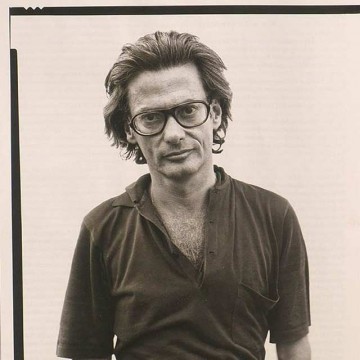
First published by the Northside San Francisco in July 2009
Richard Avedon Photographs 1946-2004 at the MOMA
July 11-November 29, 2009
All photographs are accurate. None of them is the truth. -Richard Avedon, 1984
Richard Avedon changed photography. His instincts and methods removed the traditional boundaries imposed on the medium of film. Because he became so well known for his work in magazines like Harper’s Bazaar, Vogue and Life, Avedon became famous for being famous. Often his subjects were celebrities, and Avedon’s groundbreaking approach to portraiture had an effect that mutually enhanced the notoriety of both the subject and artist.
From July 11 through November 29, 2009, more than 200 photographs spanning Avedon’s entire career will be on display at the Museum of Modern Art–the only U.S. venue for this unique retrospective. Avedon’s portraits are life in motion, images in transition that imply a narrative and questions that often remain unanswered. Born in New York City in 1923, Avedon started taking photographs while in the Merchant Marines. Afterward, he began his career as a photographer for popular magazines. He brought the realm of fine art to fashion and popular culture with his avant garde approach to composition and light.
In his portraits, faces were sometimes cropped, out of focus, bleached in high contrast black and white or abstracted in solarized psychedelic color. Avedon’s creative method was intuitive. Once, a dream about snow created a preoccupation with photographing W.H. Auden, the image later realized in a black and white photo of the poet emerging from a blizzard of dreamlike snowflakes. Avedon happened upon scenes that he’d felt he’d seen before as if he were remembering a vision of the photograph he would later create.
Avedon wasn’t afraid to interact with the stories he documented. In the sixties, he captured on film the civil rights movement in the south and the antiwar protests that occurred across the United States. He photographed women in New York City’s Times Square staring into the camera while holding newspapers that read “President Shot Dead” on the fateful day of November 22, 1963 when President Kennedy was assassinated. He traveled to Vietnam and photographed civilians mutilated by napalm.
He continued to tackle unusual and difficult topics when in the early seventies Avedon produced a series of photographs of his father in the last year of his life. Emaciated and in a hospital gown, Jacob Israel Avedon somehow appears monolithic and unmovable through his son’s lens even in the face of illness and death. In Avedon’s series “The American West”, he took portraits of anonymous subjects– coal miners, farmers and other citizens that would have remained unnoticed if not for Avedon’s camera which revealed them as characters freighted with meaning and depth.
Avedon’s trademark was his ability to capture the expanse of human experience in all its complexity through his unconventional approach to the photograph. The faces of actors, poets, politicians and writers appear in this exhibition in a chronology that creates a mosaic of our time. Bob Dylan arrives as a skinny kid wandering down a rain soaked street. Marilyn Monroe is captured in an introspective mood. An ebullient fashion model in a Dior dress poses though she is somehow surrounded by elephants. The SF MOMA’s Avedon retrospective is a lively and thought provoking document of the late twentieth century as seen through the eyes of one of its most distinctive talents.